I’m going to ramble on about the old cars I’ve had over the years some good, some bad, some possibly classics. So, putting down my spanners and my oily rag, here goes.

When I was writing an introduction for my old cars bit on my old site (mr-r.co.uk, still going but no SSLs so http not https) about five years ago, I suppose I still had this image of the romance and freedom of the open in road my head. This was regurgitated most recently in the tv ad featuring Johnny Depp, a Dodge Challenger and some cultural appropriation or alternatively some other guy in an old Merc in a Confused.com ad heading for the horizon. This sort of thing works best when it’s woven into The American Dream (whatever that is) and anyway they’ve got the best roads for it, long and straight and in the desert (which is why their cars don’t need to handle). We even did our own road trip a few years ago on what’s left of route 66. Sadly not in an old school muscle car but in a Chevy Malibu! Now things have changed and petrol heads are looking decidedly medieval and not in a good way like gothic revival architecture of which I am a fan.
The “Golden Age of Motoring”. Was it in the 1930s when you would hardly ever meet another car on the open road, the age of Betjeman’s Shell Guides? Or was it the 1950s and 60s when motoring was within the reach of most people and there were no speed limits on the open road (thanks Aston Martin for that!) Or is it forever in those blissful ten years of one’s (driving) youth?
Will it be the same when we’re all-electric (via hydrogen I recommend)? I’ve been in a Tesla, the acceleration is blistering but you’re hardly independent anymore when the ability to proceed may depend on a software update from Tesla HQ plus the urgent need to find and wait at a charging point. (Refuel in minutes rather than hours with hydrogen, by the way.)
Anyway, there’s still time to work on old cars and do a little gentle upgrading (you can’t do much on new ones other than a bit of routine servicing). So come on, put on your blue nitriles, get your tools out and start spannering!

My first vehicle was a Ford Thames 400E mini bus, 1022PH It cost £150 from a garage in South London. It was a twelve-seater but I took some of the seats out to give some unrestricted floor space which came in handy from time to time. It was great for carting friends around and it made it to Greece and back one time!
Without any load, the back end was a bit skittish and I took to keeping a garden roller in the back. What would have happened in a fifty mile an hour collision I hate to think now! Of course, with the engine between the front seats ther wan only a 1/16 inch of steel between you and a collision anyway.
This vehicle was so easy to work on. You didn’t even have to get out of the van to work on the engine, you just lifted up the lid between the driver and the front passenger. One day when the accelerator linkage failed I was able to keep going by operating the throttle on the carburettor by hand. At the same time the interior filled with grey smoke from the leaking exhaust manifold and the passengers in the back started to feel rather sleepy. It had a column gear change (3 speed with sychro on second and third!) and had an interesting quirk in that when stationary, reverse and first coud be engaged simultaneously locking the gearbox solid. Progress could only be resumed by crawling under the van and jiggling the levers operating the gearbox. This tended to happen mostly at traffic lights. (There was one rather scary time in Athens!)
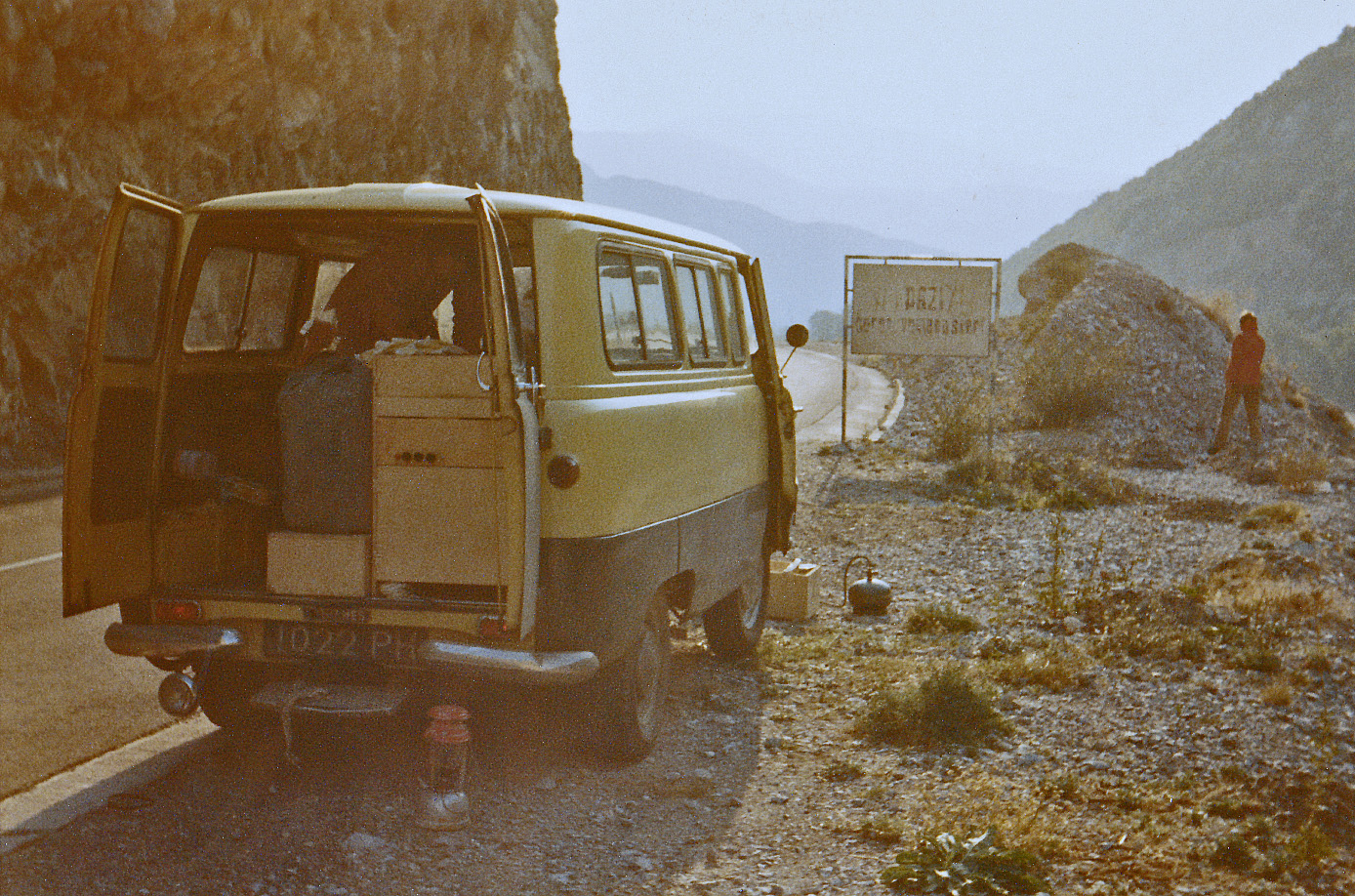
Major mechanical events included the top of a piston coming off (the rest of the piston kept on going up and down). There was no damage to the engine but there was a lot of smoke. All it needed was a new piston.
The other problem concerned the gearbox. First gear lost a tooth but drive continued, albeit with a bit or a clicking noise. After a few months an adjacent tooth broke off and it ceased to proceed (at least in first). Fortunately, I had an old dying Ford Consul and the innards of its gearbox were the same as the van’s. So I drove the Consul up to the council tip and the council guys there helped me push it over on its side so I could pull off the gearbox. Those were the days! I must have had a lot more energy then because by one AM the next morning I had stripped the gearboxes, swapped the gears and put it all back together again!
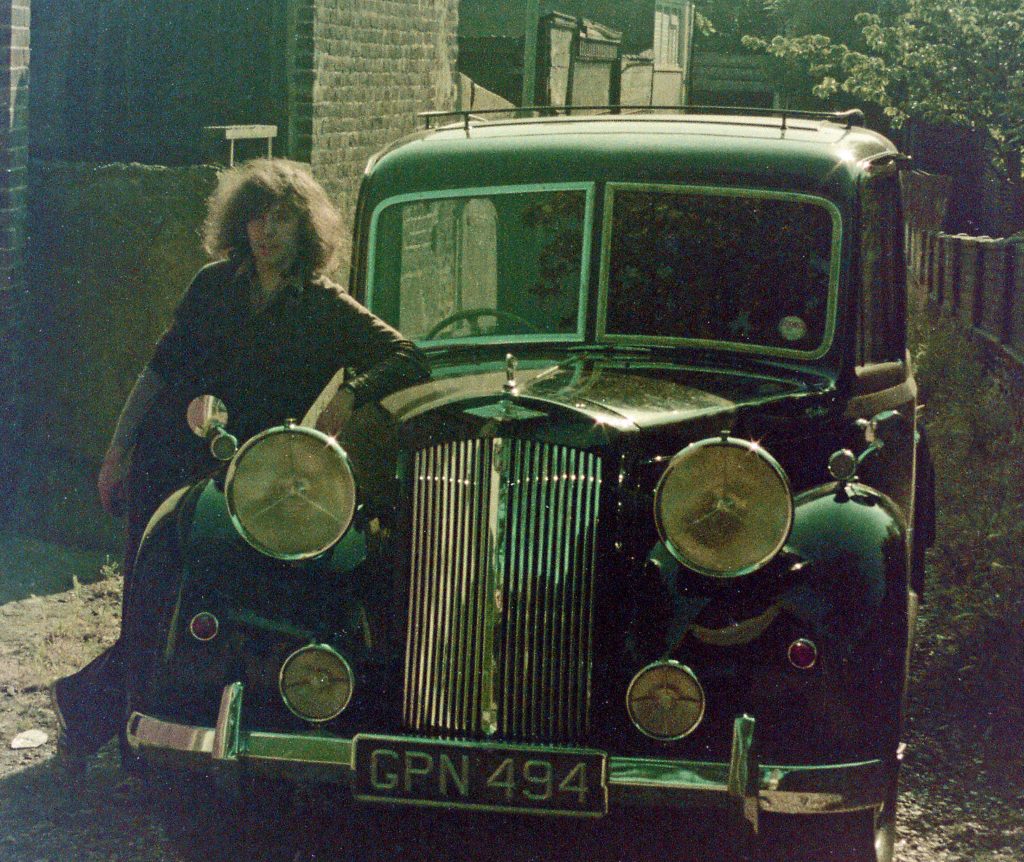
Austin Sheerline hearse. 4 litre, 6 cylinder, lots of torque and very quiet. Sadly the onboard jacking system didn’t work. I used to ahve to visit a warehouse in Brighton and nearby was a garage where a firm of undertakers kept their vehicles. One day I was passing on my way to the warehouse and saw the massive nose of the Austin with its mechanically dimming P100 headlights poking out of the garage. I said something like “wow what a car” to the guy and he said “want to buy it, we’re getting a new hearse?”. So I paid the man £150 and took it away! Ah, the impetuosity of youth! Eventually it had to go as my mother thought it very unlucky to keep such a vehicle. Also no locks were fitted on the front doors which made security a bit of a problem. PS. Anybody seen my hair? I seem to have mislaid it!
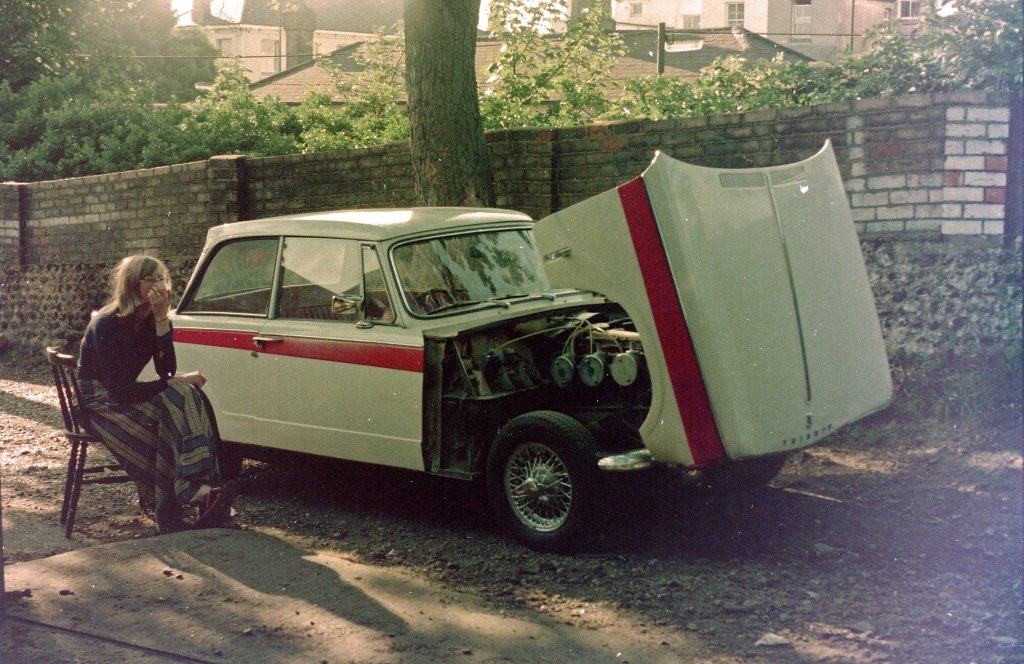
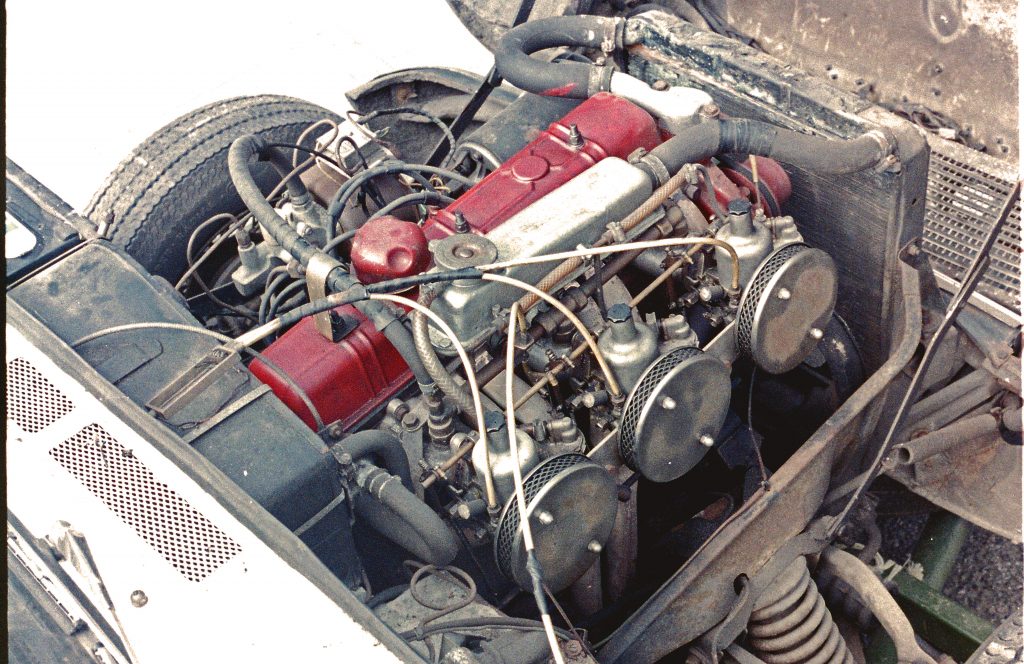
Cute little 1600 Triumph Vitesse with triple carbs, long branch exhaust manifold and wire wheels. I bought this from my friend John for £25. I did a lot of work on the engine (recon head, new carbs). Even with these mods, it wouldn’t quite do a ton. The main problem was rust in the chassis. One evening we got a flat by the famous red sign on the A303. Unfortunately, there was nowhere on the chassis strong enough to jack it up with my bottle jack. We sent my partner’s sister off to hitch(!) to the nearest telephone box to phone for the AA. On another occasion the tie rod that stops the rear swing axles from flopping around detached (rust again) and made for some interesting handling! I nice man in a garage in Rope Tackle Wharf, Shoreham by Sea repaired it with a piece of angle iron from an old bedstead. More faults developed. Eventually, it also lost reverse gear too (and possibly first) and it had to go (for £12.50 as I recall.)
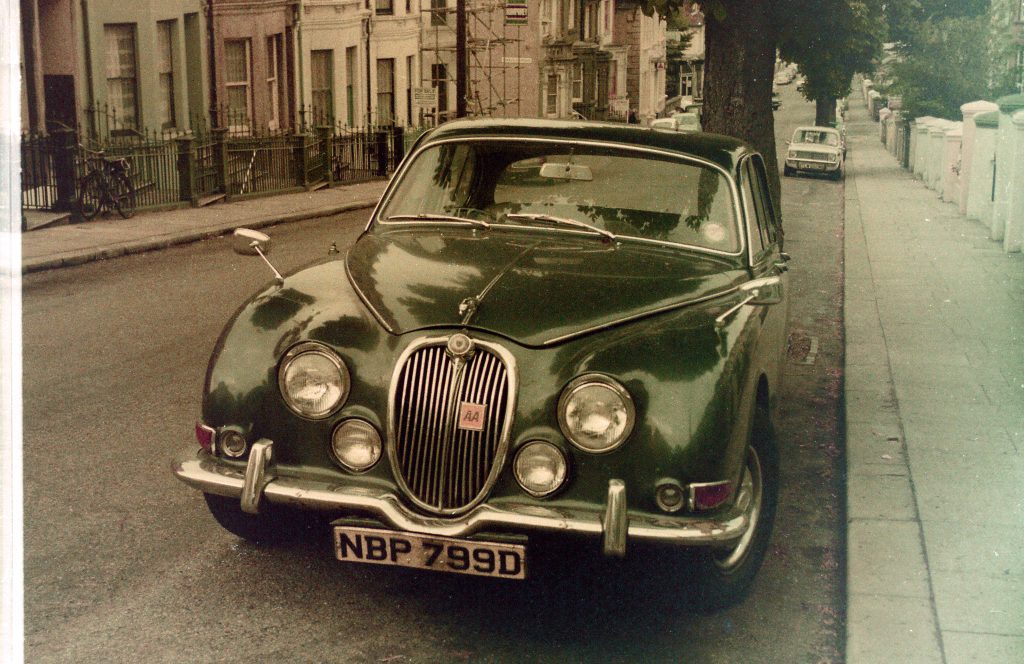
Quite nice Jag S-type. The only car I had in which you could see the fuel gauge move as you drove along!
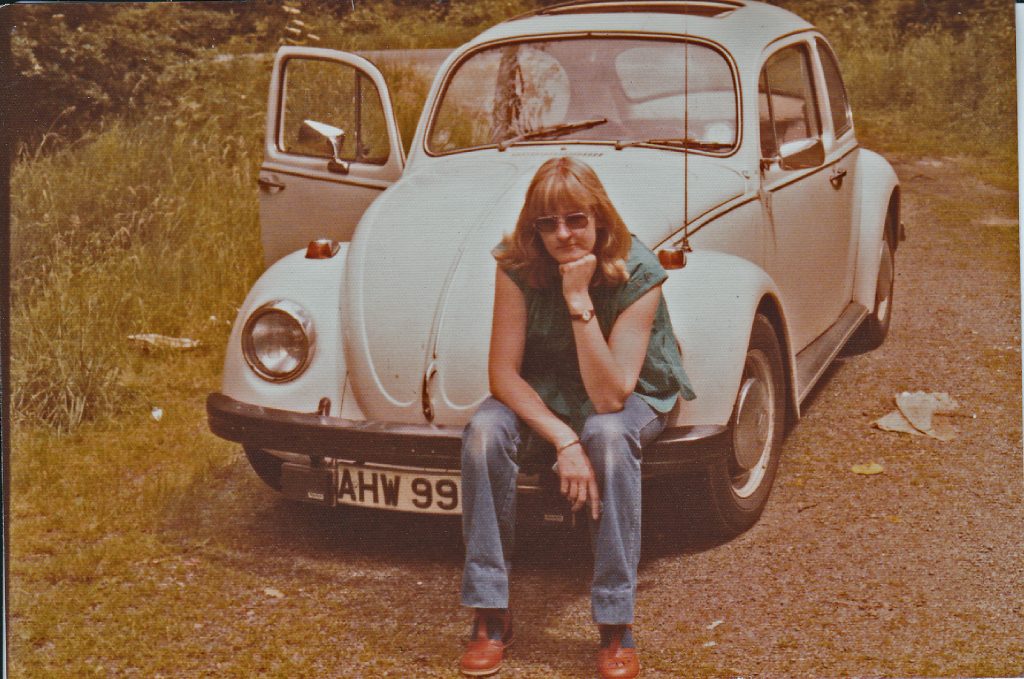
Great old LHD Beetle. I got this from our German friend, Gunther (a great guy, now, sadly passed on) when he went off to work in Brazil. This car got us all sorts of places including as far as Florence. Because the oil cooler masks one of the cylinders, the exhaust valve on that cylinder is prone to burning out. That happened on a trip to Cornwall once. I took the engine out (4 bolts) and swapped the valve in Mother-in-Law’s garden and on we went!
Eventually, however, the VW was (almost literally) sunk by its leaking sun-roof. Water collects in the headlining then inundates the passenger or driver depending on whether you next turned left or right. It would than collect in the floor wells and rush to the back or the front depending on whether you went up or down hill! Never buy a car with a sun-roof!
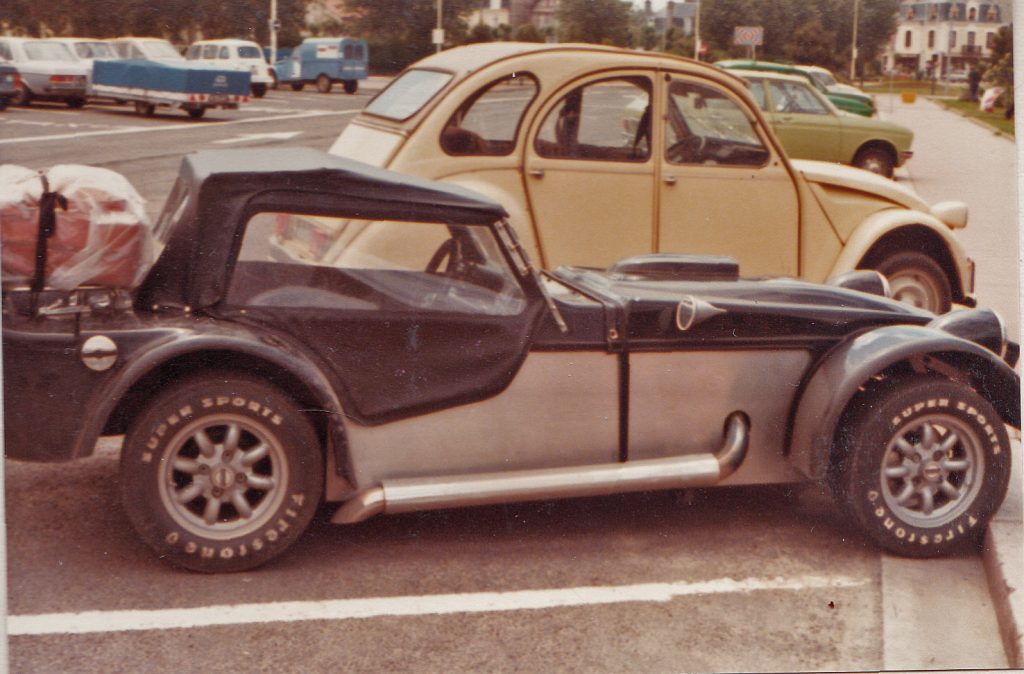
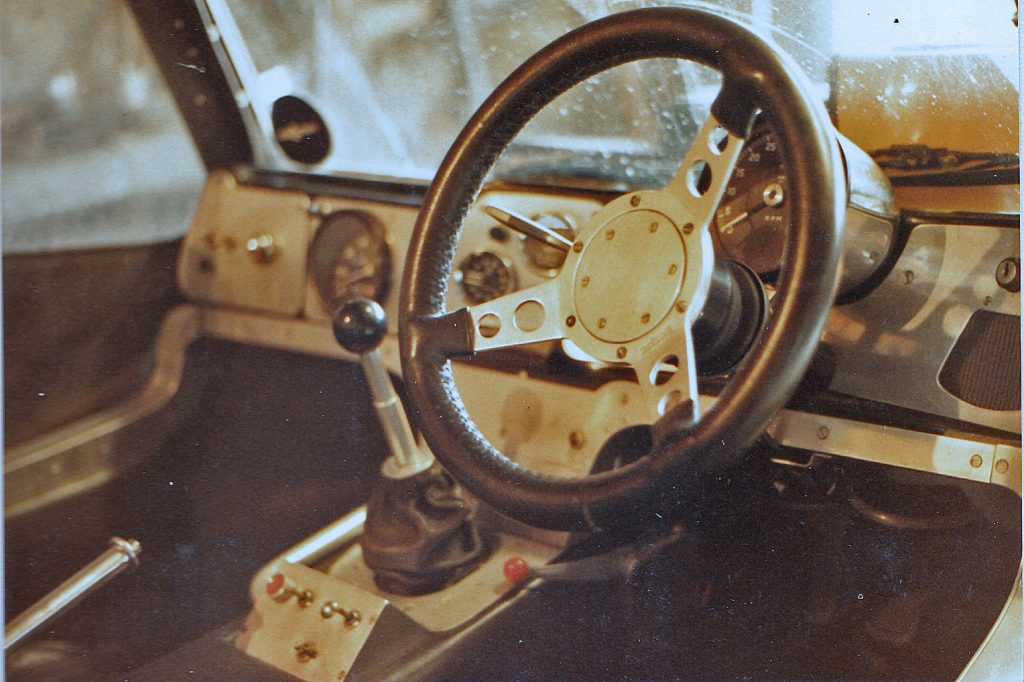
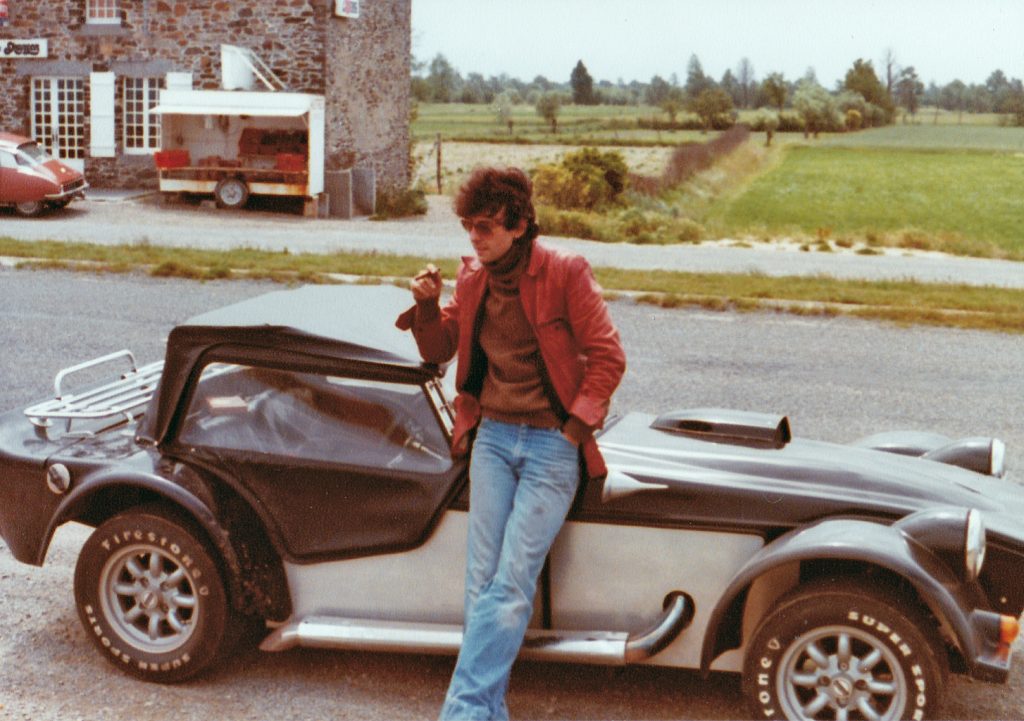
Fiiat 1600cc twin-cam, 5-speed, Corsair GT rear axle with Dutton 5-link suspension, Triumph Vitesse 2 litre front suspension. Later it had 4-spoke 13×5.5” wheels which suited it much better than the 6” wheels and crap tyres Dutton supplied. (Hair still present at this point.)
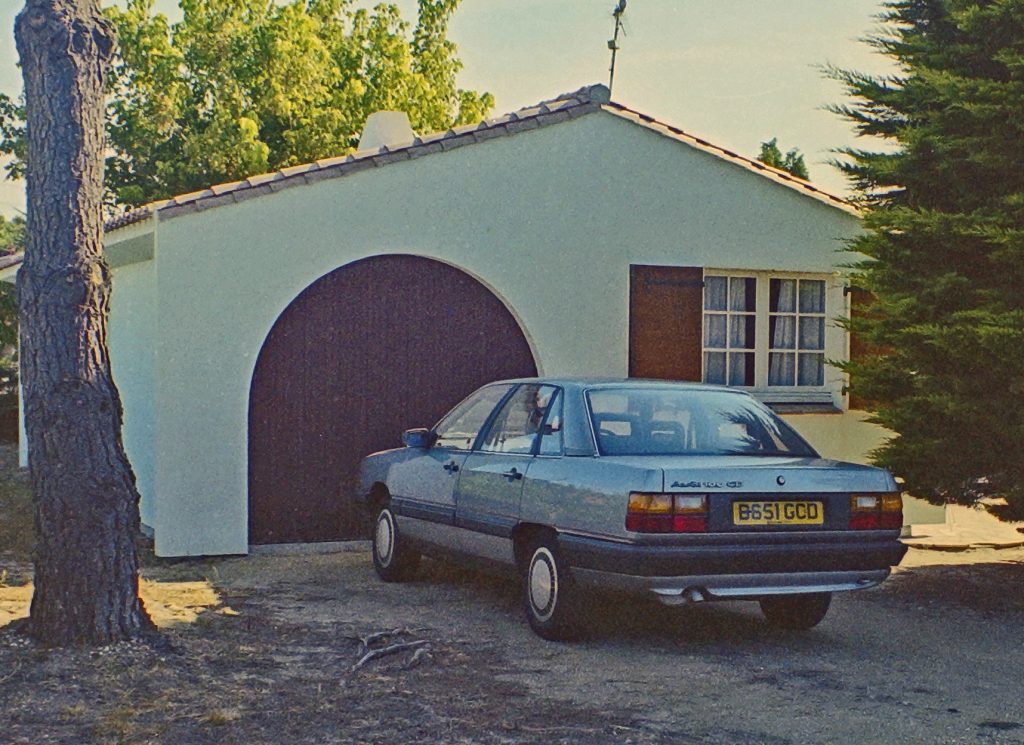
Audi 100 CD, about 1984, 2.2 litre, 5 cylinder. I bought this when it had about 70k on the clock and sold it when it had 210k! It was a fast and comfortable car but a little too keen to lock the rear wheels when braking in the wet and only me in it. This lead to a couple of heart in mouth moments! I fitted Continental tyres at the time which lasted 50,000 miles each set. This longevity might have been at the expense of grip!
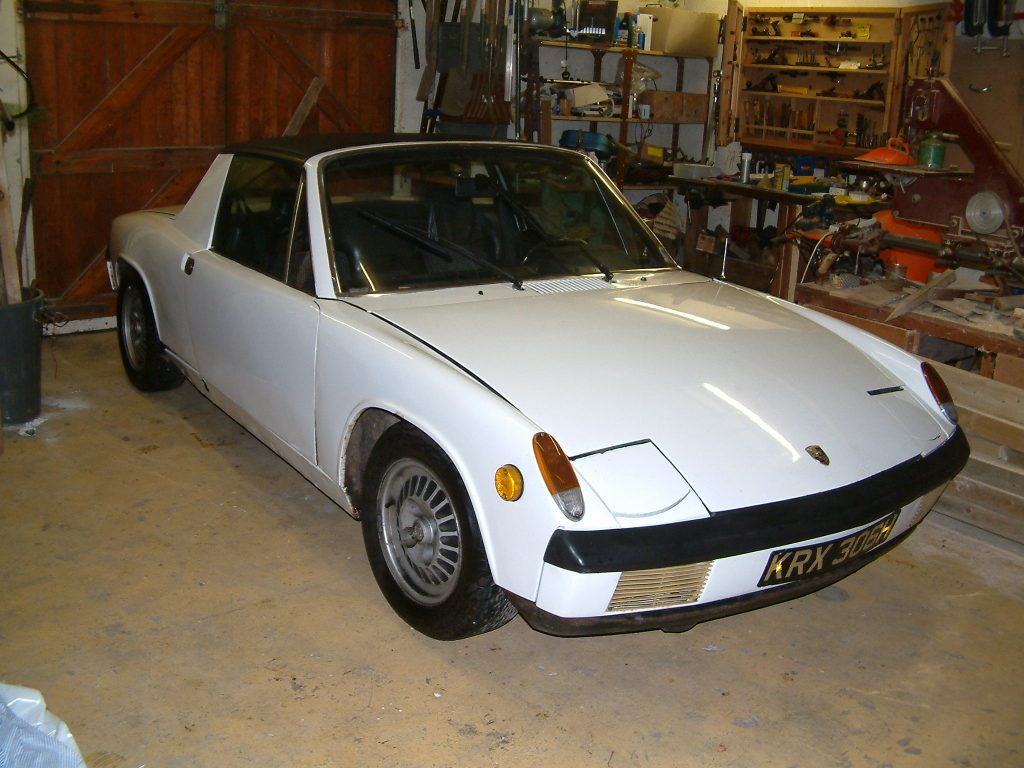
When I first got this car, I did a little work on it including sorting out the gear linkage (it’s the rear shifter rather than the better side shifting gearbox so the linkage can be a pain). I also replaced the dash surround which had split on top (California sunshine?) I also fitted Pedrini wheels which were an original option.
Since then, the only thing which has happened is that the workshop has filled up alarmingly with (if I am honest) junk and there is just no space round the 914 in which to work! I have dreamed a bit though. How about a conversion to a 916? Unfortunately, that would require a great deal of 911 bits and they ain’t cheap! How about a small block Chevy? The adapter plates are available Then there is the Subaru option. At least that is a boxer engine. Lastly, and this is a possibility, turbo-charge the existing engine and fit modern fuel injection. Well my wife does do the Lottery ever week!
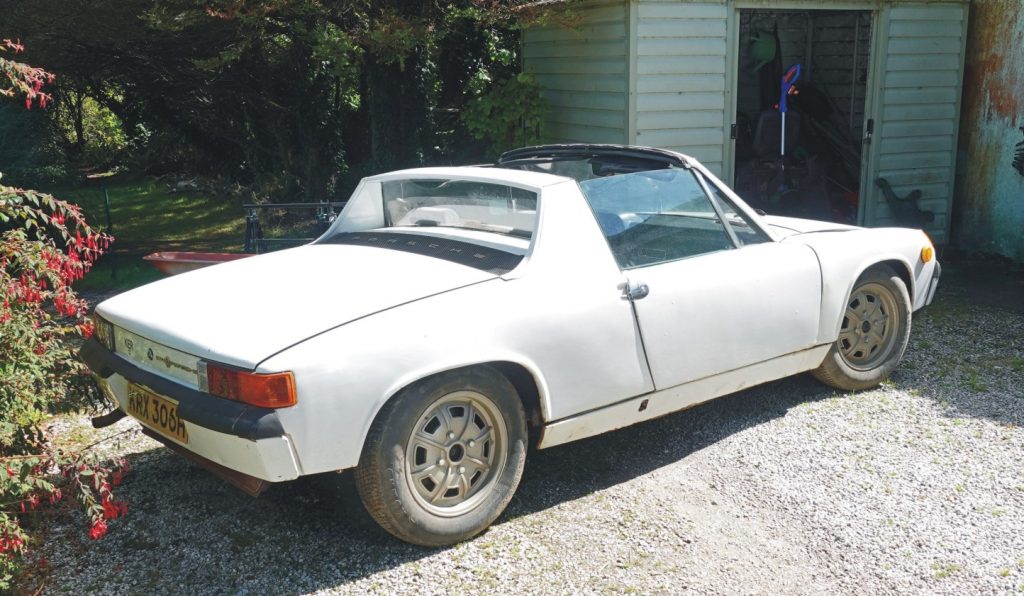
Recently, I cleared all the “junk” from around the car (somebody had expressed an interest). After fitting a battery, cleaning the points and blowing some compressed air through the carburettors, it started (after 18 years!) What’s more, although the rear brakes seem a bit seized, the front brakes appear to be working. When I got it out of the workshop, it looked quite cute. I might just do some serious work on it after all!
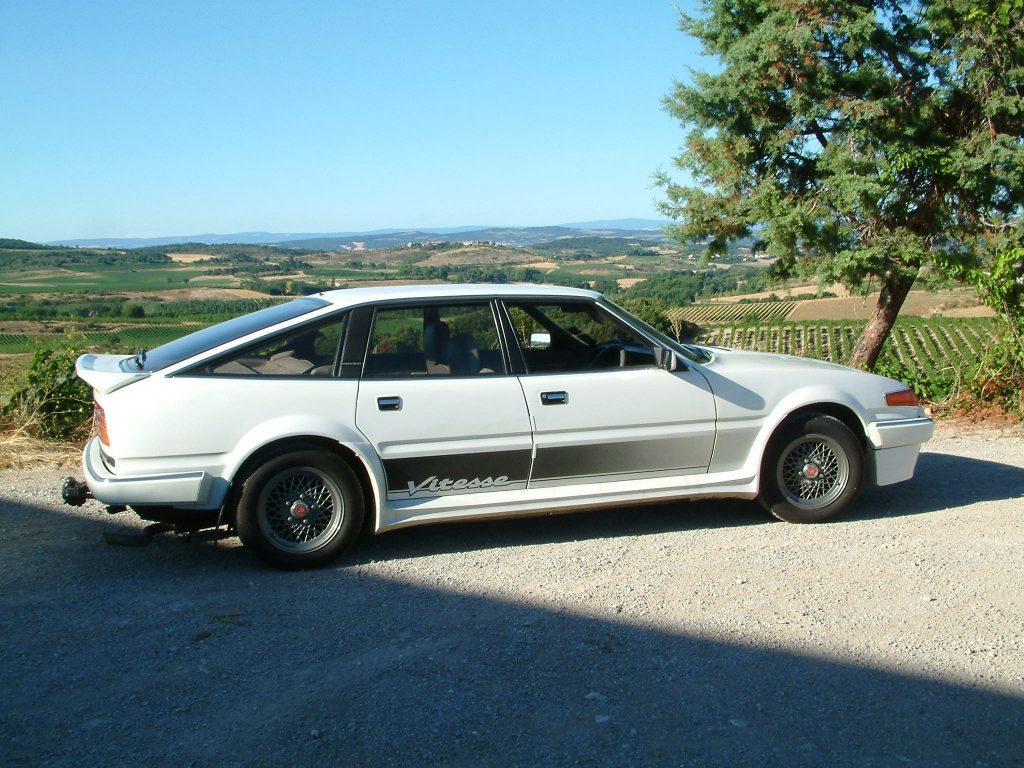
I’ve owned this car close to fifteen years. It’s a Twin Plenum model of which a limited number were supposedly made as homolgation specials. They have twin throttle bodies and modified inlet trumpets on the inlet manifolds. The heads are on mine have twin valve springs. Otherwise, they seem to be as ordinary Vitesses. I’m not sure whether the fuel injection computer is standard. They were rated at 190hp as was the standard Vitesse, so the go-faster parts were probably there just to facilitate further tuning. It is quite speedy and is a very comfortable car but is cramped in the back for what is quite a big vehicle (it only just fits in my garage which can make getting it up on ramps tricky!)
The story I was told by the previous owner (who was a bigwig in the P6 club) was that in 1985 BL took two Vitesses off the production line, painted them white including the bumpers and rear spoiler and fitted side skirts. The Vitesse Mk2 rubbing strips on the doors were not fitted but the Mk1 transfers were added. They were then used on the Beaujolais Run before being sold on. The other car does not survive, I was told.
I now know, thanks to the SD1 Club that this car is one of 55 Lotus converted from production-line single plenums to twin plenums. This was done in Norfolk, the cars being trucked back to Cowley, this one on 01/08/1985. The remainder of the 500 TPs produced were made on the line at Cowley later in 1985 and into 1986. The provision of dual valve springs was not a Lotus modification.
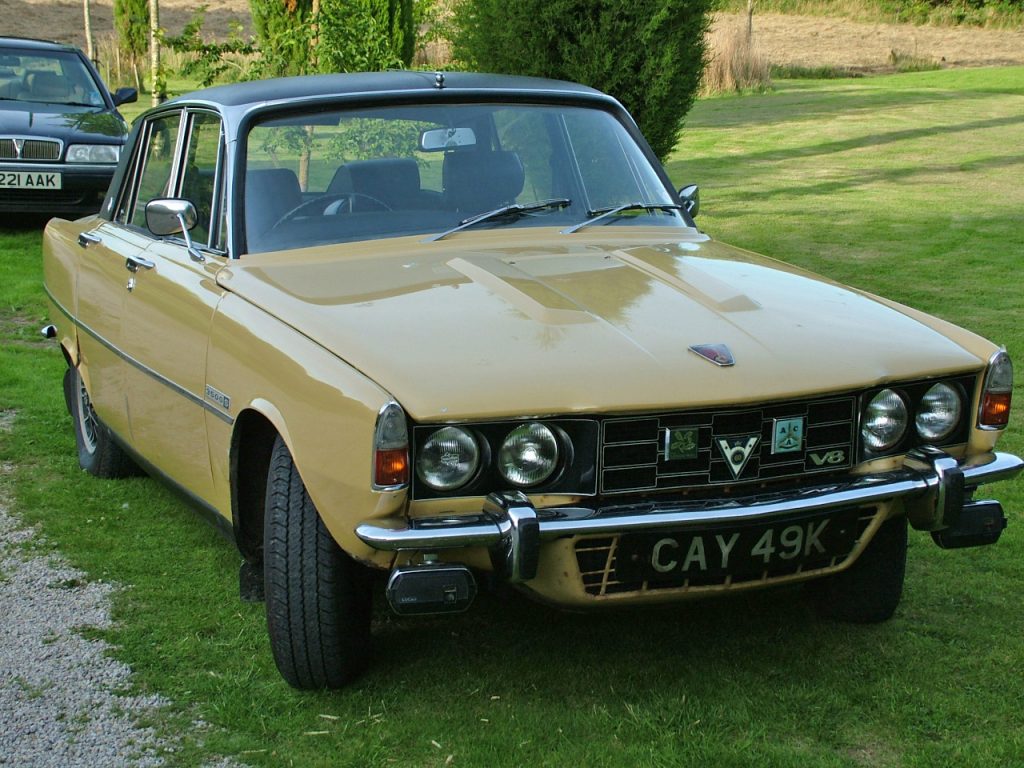
CAY49K was a nice car. It seems it was originally owned by Vice Air Marshal Cyril Kay (hence the plate). His biography can be found here. I fitted it with replacement wings, and a Megajolt ignition system which was a fantastic improvement over the old contact breaker and distributor. The engine was very much smoother and responsive. If you used a timing light on the contact breaker ignition the mark was all over the place – it was a blur. With the Megajolt it was a rock steady thin line.
I left the ond system in place and it could have been reinstated just by re-connecting the original plug leads. It was necessary to keep the old system going, however, if you wanted the rev counter still to work. This depended on the coil current also passinf through the counter rather than detecting a fluctuating voltage. It was necessary to dissipate the high tension energy in the coil by connecting it up to a high voltage resistor. This was made from between ten and twenty 100 k ohms 1 watt resistors soldered together in a row and slid inside a piece of silicon rubber tube. The other end of the resistor chain was connected to the chassis. Without this load the coil can generate too high a voltage and possibly burn out.
I also fitted a reasonably decent hi fi system with an early version of an ipod reader, 4 speakers and sub woofer.
Unfortunately, I rarely drove it although it was always taxed, MOTd and insured and in fact it was a real pleasure to drive. But there is only so much time in the day!
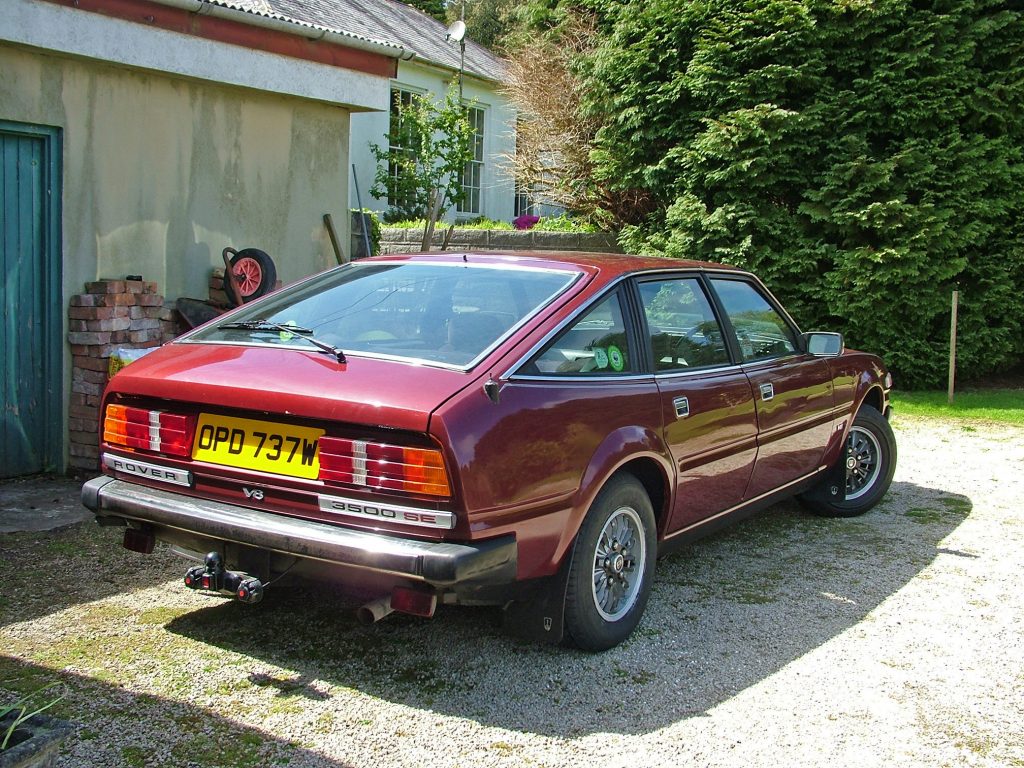
I like the Mk1 SD1 – it is a cleaner, purer design than the Mk2, especially in the interior with its rather minimalist instrument pod. It has smaller, neater bumpers and no rubbing strip on the sides. And I also like the rather odd recessed headlights. I was going to hot rod this a bit but only got a part of the way there before I realised I had too many projects and not enough life and it had to go.
Anyway, I had a Vitesse (which is a Mk2 SD1) which I bought as somebody’s unfinished project which I used to upgrade the Mk1. I fitted the 4-pot ventilated front brakes which worked much better on this car than they seem to on my white Mk2 Vitesse. This is possibly because I didn’t fit the complicated splitting Vitesse front/rear proportioning valve and stuck with the Mk1’s standard version. I also replaced the rear brakes with Rimmer “India” stock. I had the Vitesse’s wheels painted gold, fitted the Mk1’s door mechanisms into the Vitesse’s doors fitted them ( apart from of couple of holes they are identical) and fitted the chin spoiler from the Vitesse (but resisted the temptation to fit the tailgate spoiler). Then I had the car re-sprayed and it looked pretty good.
I then turned to the engine. My intention was to use the T-Series 4 cylinder twin-cam unit which I had re-built to suit a front to back installation. It would have been 200hp and about 35mpg on a run! (Perhaps). I modified a front sub-frame to take the motor and sorted out the engine management and wiring. None of this got done, unfortunately for the above mentioned reason. However, I did install the cooling system. It involved a Davies-Craig electric cooling pump and a Rover 820 turbo radiator and electric fan. This worked very well with the SD1’s V8 and I later installed a similar system on my white SD1 Vitesse and on the TR7 V8.
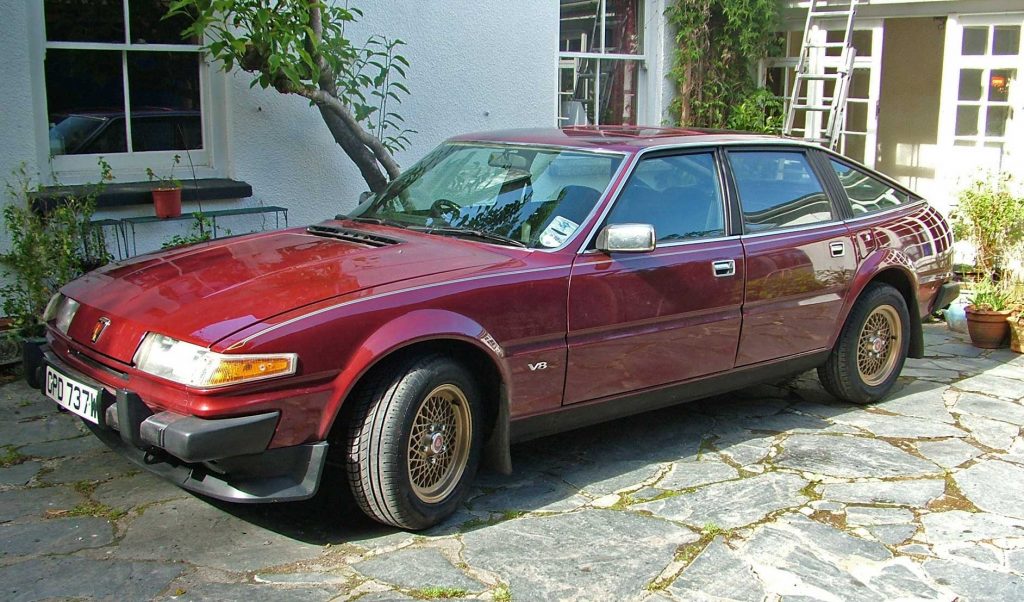
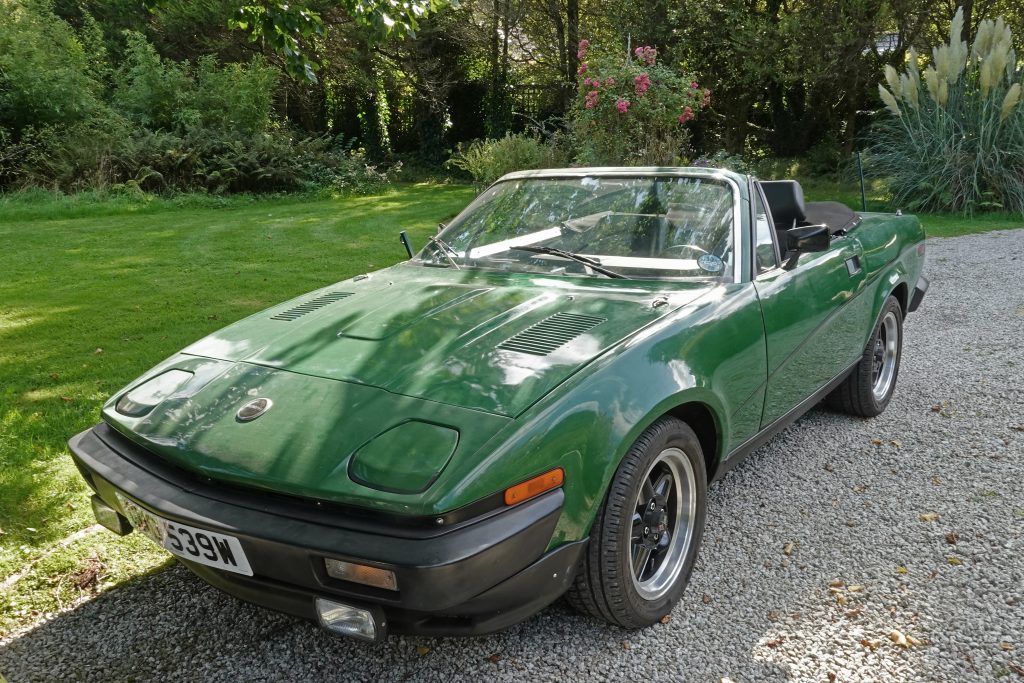
I have owned this car for about 15 years and done quite a lot of work . It is probably the project that is the most nearly finished of all my car projects! It still needs a respray, however. See elsewhere on the site for further details.
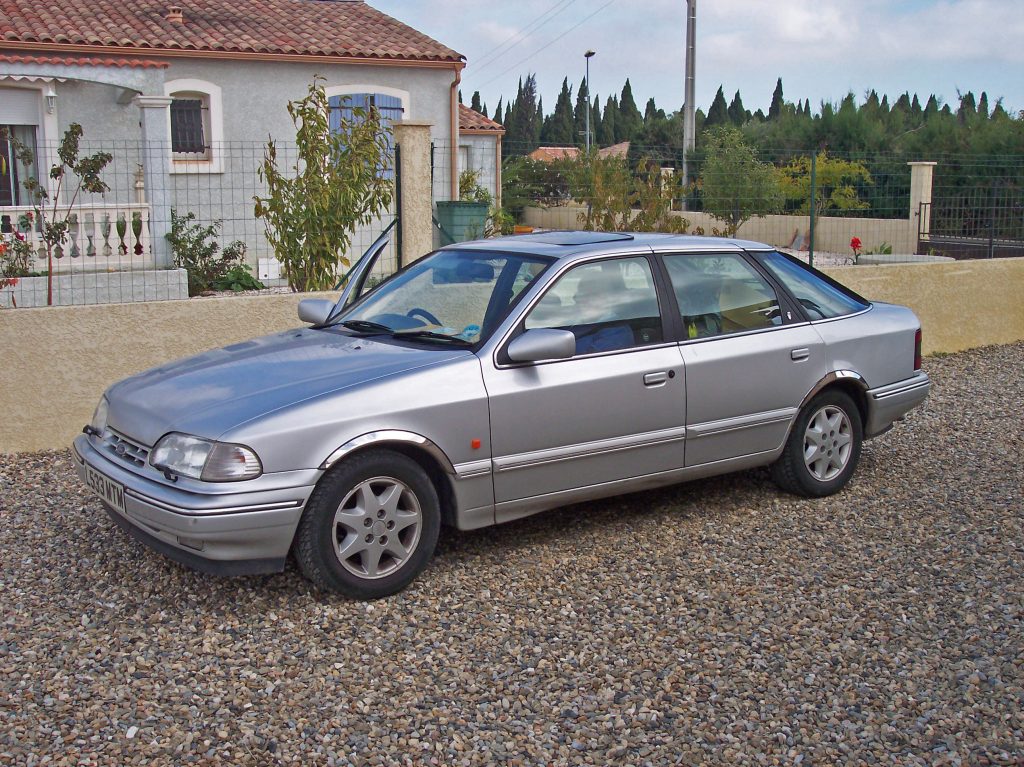
I bought this 2-litre for £600 for my son. When he graduated to the Vitesse, I took it over and it served us very well as a load lugger. We traded it in under the scrappage scheme (for £2000!) when my wife bought a new car.
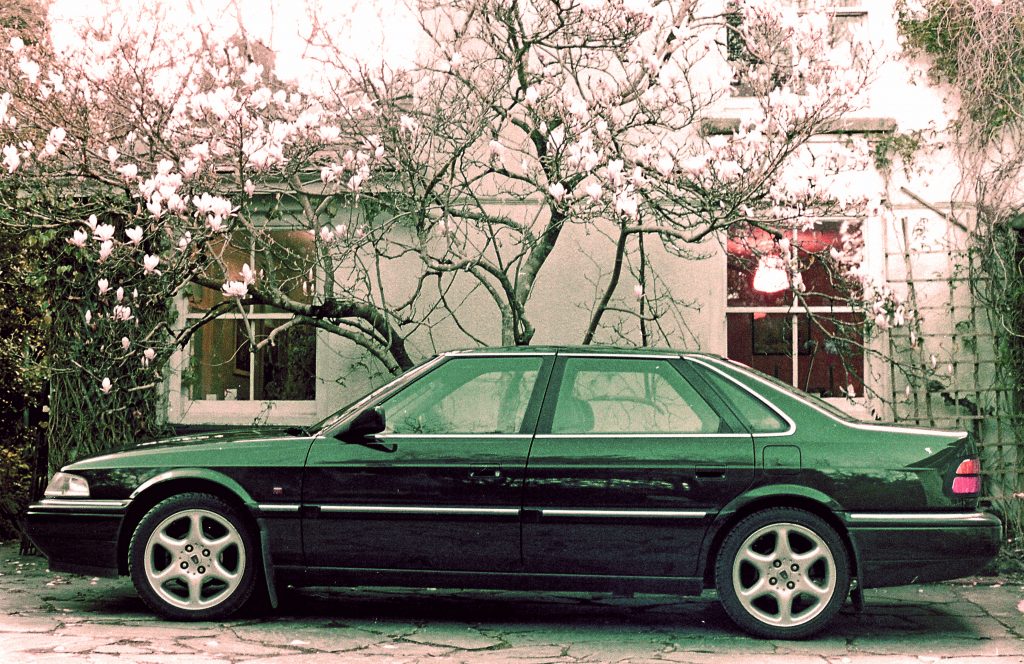
I bought this car when it had only done 30,000 miles. (I think this might be the newest car I have ever bought!) It was in great condition and very fast. (200 hp!) There was also colossal torque steer which wasn’t so good! Gradually, however. It developed niggly faults – for example the alarm sensors had to disconnected to prevent the alarm going off randomly. It got passed on to my son and eventually the engine blew the head gasket in a big way (no compression on any cylinders!) Given the range of minor and major problems I decided reluctantly to scrap it.
The seats live on in my TR7 and various engine ancillaries including the ecu were incorporated in my T-series rear-wheel drive project which has not come to anything and won’t do now as I have sold on the engine. Oh well!
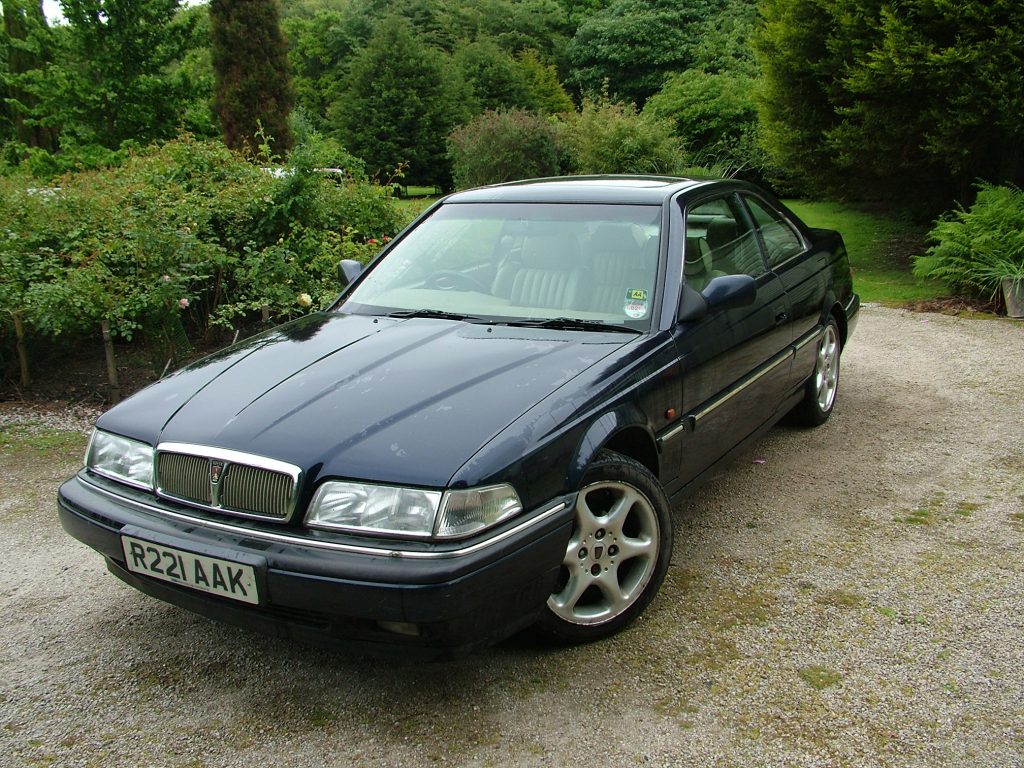

I thought this was one of the prettiest Rovers made. It also had a lovely interior. When first made they were asking in the high twenties of thousands of pounds for this car, which is possibly why not so many sold. Although it had a two litre turbo like the Vitesse Sport is was noticeably slower. I think the ecu kept it at 180hp or so. It suffered from the same sort of niggly faults as the Vitesse Sport and eventually I had to let it go. Looking at these pictures now, I wish I still had it but I say that about all my cars!
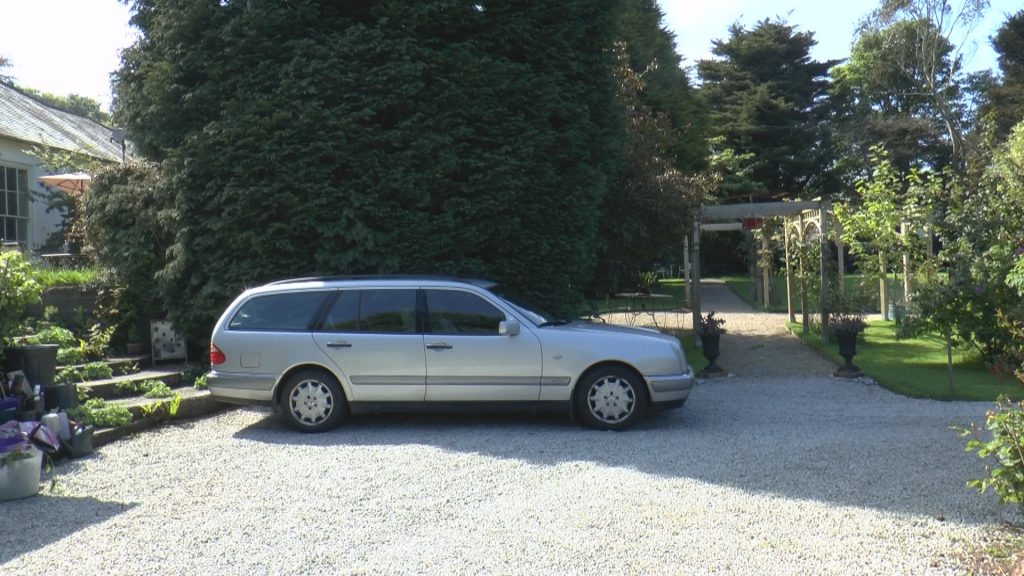
A great load lugger. I originally bought it to drive to France (where diesel was cheap and when we thought diesel was good!) It was not as reliable as I would have hoped a Merc would be (as it had only done 130,000 miles). Also it tended to suffer from rust underneath.
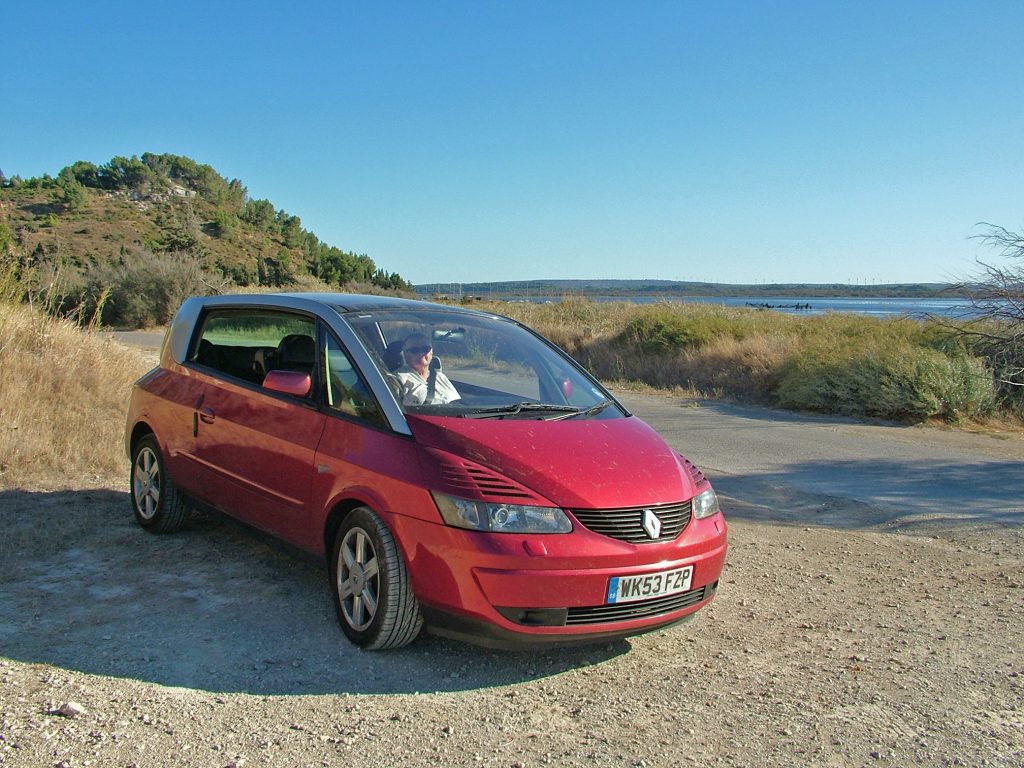
This car is the 2 litre turbo version which is plenty powerful enough and more economical than the V6 (IMHO!) I once encountered another in Bristol. It was the same model as mine. Unfortunately, I was not driving the Avantime at the (Avan)time. We have driven it to France on several occasions and there the Avanime is a little more common. I managed to park next to one in La Franqui (a pretty little seaside town in the Languedoc). It was driven by a Brit!
This car is a bit of a design classic, was loved by the Top Gear team, was a sales failure and probably sent aerospace firm Matra to the wall! The car has been passed on to my son. I hope he doesn’t break it (see Rover 820 Vitesse Sport).
Unfortunately, the Avantime is now broken! Not my Son’s fault though. The exhaust has rusted out and one would have to be fabricated. The exhaust was only eight years old, fitted by a Renault dealer in France at great expense. Also there is a crack in the windscreen and no replacements are to be had. Plus a cracked rear spring. Oh well!
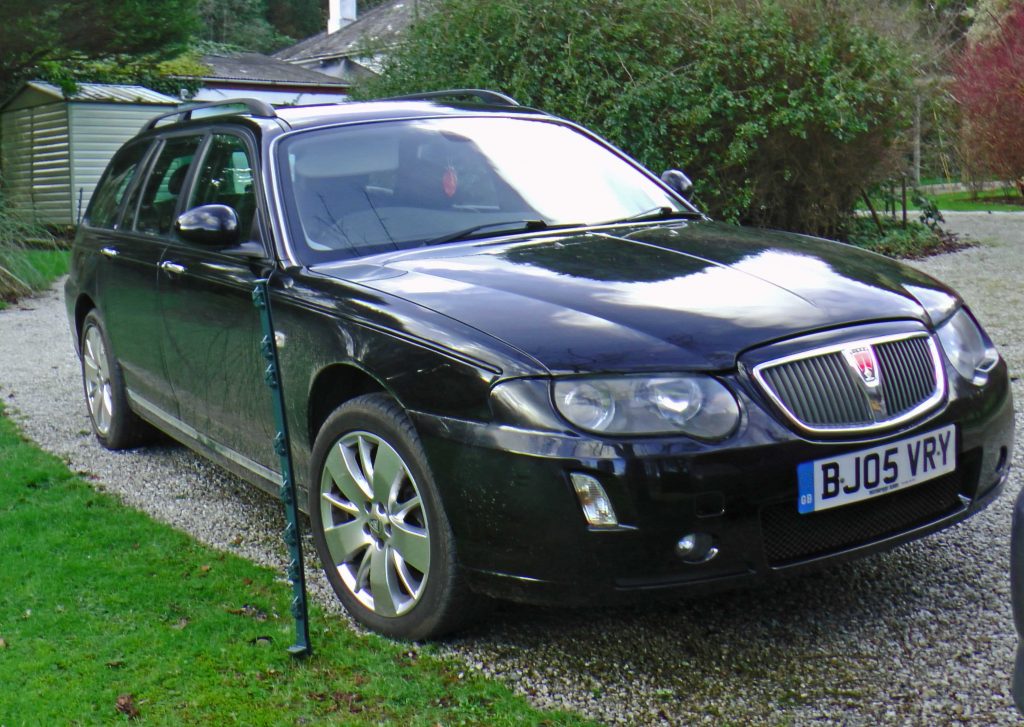
This Rover 75 estate seemed like a great replacement for the Merc E300, comfortable and luxurious and very cheap. How wrong I was! I knew its reputation for unreliability. I knew its power plant, the Rover K-series, blew its head gaskets.
About ten years ago I was having some work done on an engine. The reconditioning firm had a K-seies head on the bench. I said something to the effect that it was a bit of a disaster. Oh no they replied it;s been a fantastic source of income for us! I knew all this but I still bought it. Although the seller had paperwork for a head job it still blew on a long distance trip. I tried some patent head gasket repair stuff and it actually fixed it.
However, a month or two later it cut out and wouldn’t restart. The RAC trailered it to our local garage and after an an initial diagnostic check failed to establish anything concrete, I left it there. Next day it started and ran fine. Perhaps water in the electronics, they said. I just couldn’t trust it again though.
